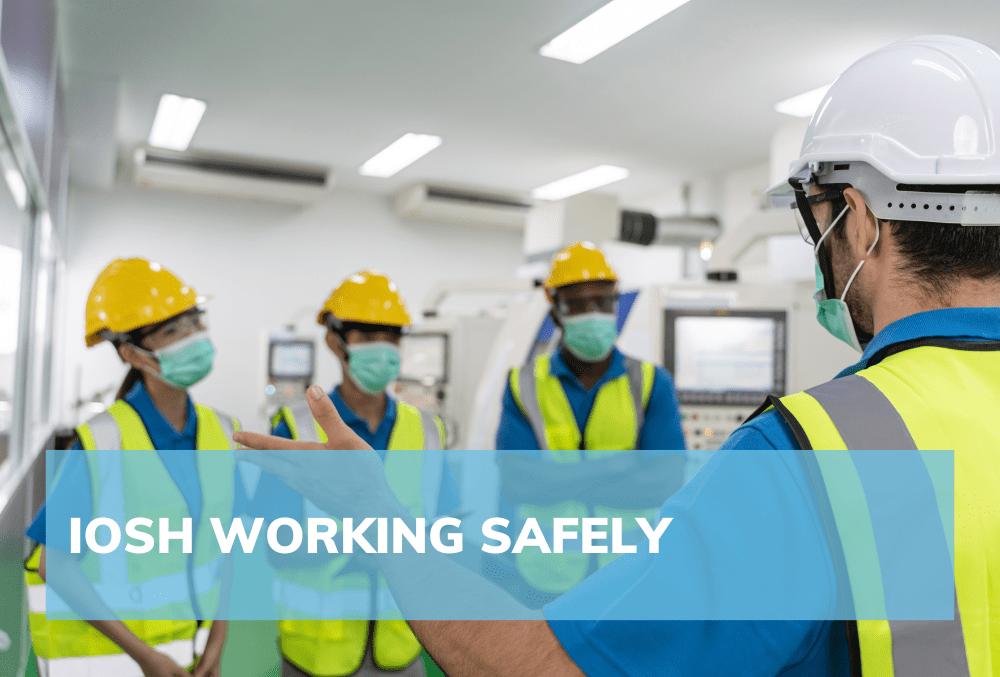
Safety at work is non-negotiable. It is essential for protecting the physical well-being of employees, supporting productivity, and fostering a positive workplace culture. For this reason, businesses worldwide are increasingly turning to specialized training programs like the IOSH Working Safely course. Developed by the Institution of Occupational Safety and Health (IOSH), the IOSH Working Safely course offers practical insights and skills for improving workplace safety standards across various industries. In this article, we’ll delve into what the IOSH Working Safely course involves, its core objectives, and the benefits it brings to employees and organizations alike.
What is the IOSH Working Safely Course?
The IOSH Working Safely course is a one-day program designed to provide employees at any level with essential knowledge on health and safety in the workplace. Unlike other advanced health and safety courses aimed at managers or safety officers, this course targets all workers, regardless of their position or previous safety training experience. The course is designed to raise awareness of workplace hazards, equip employees with basic risk assessment skills, and promote a culture of safety.
The IOSH Working Safely course aligns with international safety standards and is recognized globally. The course is ideal for industries ranging from construction and manufacturing to office-based roles. By offering practical, easy-to-understand safety concepts, IOSH empowers employees to make safer decisions and spot potential risks in their daily tasks.
Key Components of the IOSH Working Safely Course
The course is built around several key components that focus on practical safety knowledge and behavior. An outline of what attendees might anticipate is provided below:
-
Understanding Safety and Health Hazards
One of the primary objectives of the IOSH Working Safely course is to help participants understand different types of hazards they may encounter. It emphasizes the importance of identifying hazards in various settings and encourages workers to be proactive about noticing and reporting them. -
Defining Workplace Responsibilities
IOSH Working Safely emphasizes that safety is everyone’s responsibility. The course clarifies the roles and duties of individuals within a company, showing how both employees and employers contribute to a safer work environment. By understanding these responsibilities, participants learn the importance of being vigilant and accountable. -
Assessing and Controlling Risks
Learning how to assess and control risks is another core component of the IOSH Working Safely course. Participants gain skills in conducting basic risk assessments, evaluating possible dangers, and applying controls to minimize hazards. These skills can be particularly valuable for workers who may encounter heavy machinery, chemicals, or other high-risk elements in their work. -
Understanding Workplace Environment Hazards
Beyond immediate risks, the IOSH course covers broader environmental hazards, including pollution, waste disposal, and energy usage. This module helps employees understand their environmental impact and promotes sustainable practices that are beneficial for both the workplace and the planet. -
Practical Application of Safe Practices
The course includes real-life scenarios and exercises that teach participants how to apply their knowledge in practice. By working through these examples, employees become better prepared to respond to accidents or unexpected hazards, making safety a part of their routine.
Why Invest in IOSH Working Safely Training?
Investing in the IOSH Working Safely course has numerous benefits for both employers and employees. Here are a few key advantages:
-
Reduced Risk of Accidents and Injuries
A well-informed workforce is less likely to experience accidents. By equipping employees with the knowledge to identify risks, report hazards, and handle situations safely, companies can significantly reduce workplace injuries. -
Improved Workplace Culture
When everyone in the workplace understands safety protocols and their role in maintaining them, it fosters a stronger sense of community and teamwork. Employees feel valued, knowing that their well-being is a priority, and this can lead to improved morale and productivity. -
Legal Compliance and Cost Savings
Compliance with health and safety regulations is a legal requirement for most businesses. By providing IOSH training, employers can demonstrate their commitment to safety and avoid potential fines or legal issues. Moreover, a safer work environment can reduce costs associated with employee injuries, lost productivity, and insurance premiums. -
Enhanced Reputation
Safety-conscious companies are often more attractive to clients, investors, and future employees. Demonstrating a commitment to workplace safety, especially through recognized training like IOSH Working Safely, enhances a company’s reputation and can be a powerful tool for attracting and retaining talent.
Final Thoughts
IOSH Working Safely is more than just a training program; it’s a step toward creating a safety-first workplace culture. By providing employees with the tools and knowledge to work safely, companies can protect their greatest assets—their people. Whether you’re a small business or a large corporation, investing in the IOSH Working Safely course is a proactive approach to building a resilient, responsible, and productive workforce. After all, when safety becomes second nature, everyone stands to benefit.
Explore more articles by clicking here.














